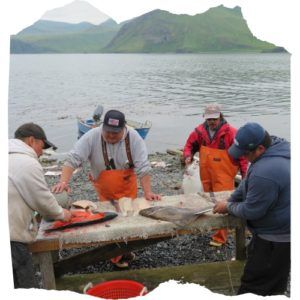What Working As An Alaskan Locum Tenens Is Really LikeWhat Working As An Alaskan Locum Tenens Is Really Like
Alaska is unique in many ways. It’s called “the last frontier” for good reason, and if you practice medicine in the state, especially if you’re working as a locum tenens provider, you’ll want to be prepared for unusual circumstances, delays, weather, and all things unexpected. This is all part of the Alaska lifestyle. In this article, we’ll break down what working as an Alaska locum tenens is really like.
While WMS does place locum providers in some larger cities and clinics in Alaska, most of our opportunities are in remote locations. We’ve made these sites a priority, recognizing that the populations in rural and remote settings are generally underserved and struggle to access good continuity of care.
What Rural Alaskan Communities are Like

Most communities are small; many have just a few hundred residents. Amenities and conveniences that you would expect to find even in small towns in the lower 48 may be non-existent in “the bush” of Alaska.
When WMS places a provider in a rural medical facility, we know we’re sending that person to a unique place. The population in the community may be mostly Alaska Natives with a heritage based on hundreds of years of living in that location.
Life in these settings is reduced to fundamentals: shelter, food, appropriate clothing and gear for the climate, and the local population.
You’ll see traditional customs, native art, and native methods of food preparation on display. Racks of drying fish, collection of local foods harvested from the land, and hunting of caribou, moose, bear, and other big game are all part of everyday life in Alaskan bush communities.
There may be a small market for essential groceries, or you may be sent to a location where the recommendation is to bring your food with you. You may have your own housing, or you may have a private room within the clinic walls.
Travel for Alaska Locum Tenens Assignments

Travel is different in Alaska too. The commercial carriers that are familiar (Alaska Airlines, Delta Airlines, American Airlines, and United) service larger communities, but to get to your final destination, if you’re going more than one stop in, you’ll almost certainly have to take a ferry, bush plane, or seaplane. That’s because so much of the state is off of the road system. Whether a community is on a far-flung island or surrounded by hundreds of miles of Arctic tundra, outside of the state’s central region, topography rules and roads are rare. It can be difficult to comprehend this until you begin to travel the state and gain first-hand knowledge of the size and challenging locations.
Climate & Weather in Rural Alaska
The climate will almost certainly be extreme in some way, either Arctic or rainforest (although Alaska does have summer weather too). The impact of weather on life in remote locations can’t be overstated. Weather controls the ability to transport people, supplies, labs, medevacs, and any other commodity you can imagine.
Weather can also disrupt communication due to outages. You may have very limited ability to call, communicate via the internet, or pull up medical records. You certainly have to dress for the climate, and you don’t want to use discount store gloves, boots, or other inexpensive gear in Arctic temperatures. If you accept an assignment in the Far North, talk to knowledgeable people about the kind of clothing and gear you’ll need. Be prepared. These can literally be life-and-death decisions.
Entertainment & Technology in Rural Alaska
Entertainment will likely be what you choose to experience in the local community: high school basketball games or wrestling (both very big sports in the state), local festivals, or other community events; hiking, fishing, or exploring the area; and any media you bring yourself such as digital books, movies you’ve downloaded, or hobbies that can be included with your luggage. While some locations may have cable or satellite TV options, it’s best to have low expectations and be prepared to entertain yourself.
Although some modern conveniences exist, even in tiny towns, some level of internet service, phones, and transportation are pretty much everywhere. It’s safe to say that the smaller and more remote the location, the more you’ll be stepping back in time.
At the same time, you’ll see people walking around with cell phones, riding on ATVs, and hearing locals discussing events from around the world just as you would anywhere. The juxtaposition of traditional lifestyle and modern culture and technology is everywhere and can feel surreal when you experience it.
